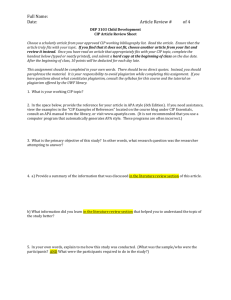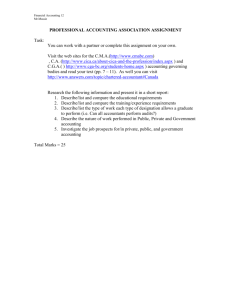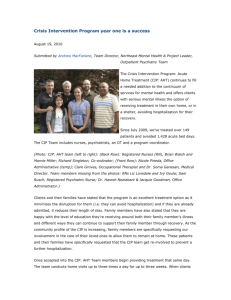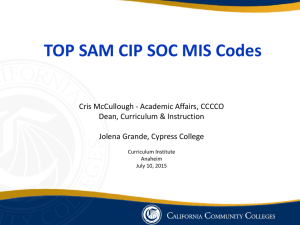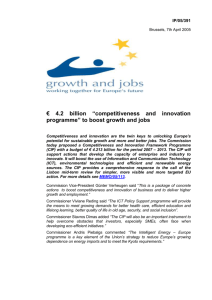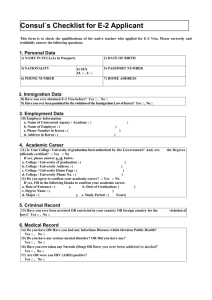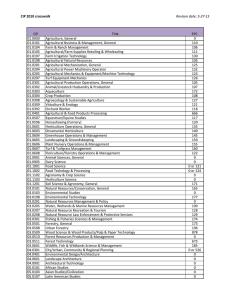workforce planning worksheet
advertisement
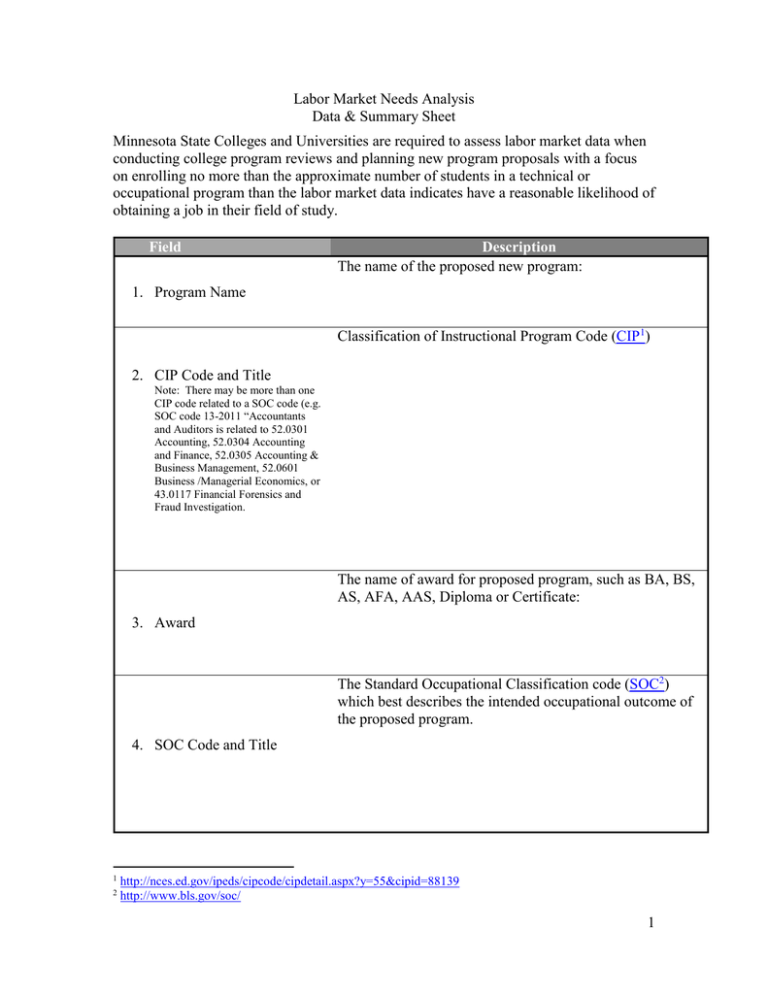
Labor Market Needs Analysis Data & Summary Sheet Minnesota State Colleges and Universities are required to assess labor market data when conducting college program reviews and planning new program proposals with a focus on enrolling no more than the approximate number of students in a technical or occupational program than the labor market data indicates have a reasonable likelihood of obtaining a job in their field of study. Field Description The name of the proposed new program: 1. Program Name Classification of Instructional Program Code (CIP1) 2. CIP Code and Title Note: There may be more than one CIP code related to a SOC code (e.g. SOC code 13-2011 “Accountants and Auditors is related to 52.0301 Accounting, 52.0304 Accounting and Finance, 52.0305 Accounting & Business Management, 52.0601 Business /Managerial Economics, or 43.0117 Financial Forensics and Fraud Investigation. The name of award for proposed program, such as BA, BS, AS, AFA, AAS, Diploma or Certificate: 3. Award The Standard Occupational Classification code (SOC2) which best describes the intended occupational outcome of the proposed program. 4. SOC Code and Title 1 2 http://nces.ed.gov/ipeds/cipcode/cipdetail.aspx?y=55&cipid=88139 http://www.bls.gov/soc/ 1 Field Description MnSCU Academic Program Planning Map3 5. Region the proposed program will serve. DEMAND Field Description Enter the current estimated employment4 for the proposed SOC code. 6. Total Employment Note: Compare to the Total Nonfarm5 state employment, which is currently 2,796,413, to get a sense of whether the occupation is small or large. Enter the number of projected annual openings for the proposed SOC code by state and region. State (LMIwise) (EDEPS6): 7. Projected Annual Openings Region (LMIwise): 3 http://www.asa.mnscu.edu/academicprograms/workforce_planning/docs/mnscu-program-planningmap.PDF 4 http://www.iseek.org/lmiwise/demand?id=OPS439&area=000000 5 https://apps.deed.state.mn.us/lmi/ces/Results.aspx 6 http://www.edeps.org/DemandIndicators.aspx?UA=5218A&pn=2&st=MN 2 Field Description Level of Education Experience required 8. Job postings in the field (review job posting requirements, both minimum and preferred). Salary/wages O*NET MN Works Background check required Physical requirements 9. Median Hourly Wage Wages are based on a biannual survey of Minnesota employers. The employment data covers full- or part-time paid workers who are paid a wage or salary, workers on paid leave, workers temporarily assigned to other units, paid owners, officers, and staff of incorporated firms. Selfemployed, contract workers, unpaid family workers, and workers on unpaid leave are excluded. 3 Field 10. Occupations in Demand Description Based on the Occupations In Demand (OID) indicator, this is a composite measure of current demand based on job vacancies, employment size, and unemployment in the occupation. How many stars in the proposed occupation? 11. Entry-Level Education Based on estimates from the federal Bureau of Labor Statistics, entry-level education conveys the minimum level of education needed to qualify for an occupation. Minnesota's minimum education level may differ somewhat. SUPPLY Field 12. Number of Programs Description Enter the total number of currently active programs for the proposed CIP code and level in the state and region for all MN higher education colleges and universities (LMIwise7) (EDEPS8). a. All MN Public & Private: b. MN State Colleges and Universities only: c. Number of programs in your region: 7 8 http://www.iseek.org/lmiwise/supplySchools?id=OPS439&cip=52.0301&area=000000 http://www.edeps.org/MarketShare.aspx?cip=52.0301&UA=5218A&pn=2&st=MN 4 Field 13. Number of Completers Description Enter the total number of completers in the proposed CIP program and level from all institutions for the most recent and previous fiscal years. a. Most Recent FY data (LMIwise9): b. Five year average data (EDEPS10) c. Does the current supply meet the demand (review completer data for past 3-5 years)? Statewide: Regional: d. Collaboration/partnership opportunities: Field SUPPLY-DEMAND SUMMARY Description How many graduates are employed full time? 14. Graduate Employment Outcomes (DEED11) How many are employed part time? What is the median wage after two years of employment? 9 http://www.iseek.org/lmiwise/supply?area=000000&id=OPS439&ord=1 http://www.edeps.org/MarketShare.aspx?cip=52.0301&UA=5218A&pn=2&st=MN 11 https://apps.deed.state.mn.us/lmi/etd/Results.aspx 10 5 Field 15. Other information (regional industry partner needs, closed enrollment request, etc.) 16. Is there enough evidence that students completing the proposed program have a reasonable likelihood of obtaining a job in their field of study? Description Summary of analysis of your labor market research: 6
